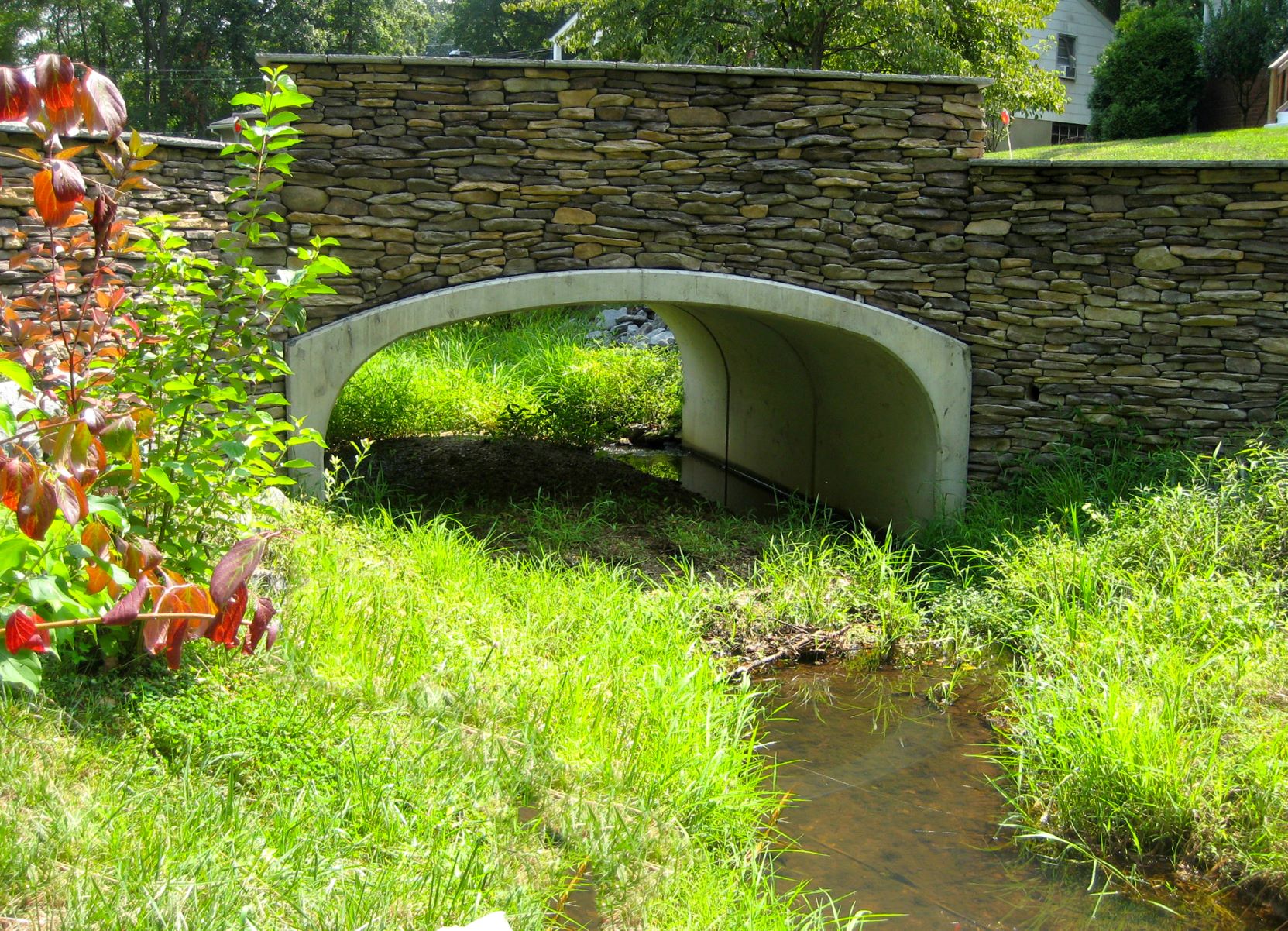Walker Branch Tributary Restoration
Laurel, Maryland
To address the problem of high bank stresses as a result of hydraulically and structurally deficient culverts, AMT was selected to engineering services. We provided the necessary hydraulic analyses and engineering to improve the culverts and stabilize the stream banks.
Located in the upper Walker Branch Tributary, this stream flows through several front yard properties on Parkway Drive, a cul-de-sac, located in the West Laurel Acres subdivision in Laurel, MD. Prince George’s County Department of Environmental Resources wanted to replace the existing hydraulically or structurally deficient 48-inch RCP driveway culverts. Stream sections in front of some homes had high bank stresses resulting in undercutting. A scour pool had developed at the outfall of the downstream culvert due to high velocities. To increase culvert capacity, the replacement culverts were sized for conveyance of the 100-year peak discharge. To help stabilize the eroded stream embankment the county desired a combination of hard armoring (imbricated rip-rap, step-pool, rock cross vanes) and bioengineering techniques including vegetative stabilization.
The project involved replacement of the existing culverts with two bottomless 12-foot span x 6-foot rise ConSpan culverts to safely pass the 100-year peak discharge of the contributing watershed; 200 feet of streambank stabilization using bioengineering techniques following Maryland’s Waterway Construction Guidelines; a hydrological analysis for the contributing watershed using GISHydro for delineation and TR-55/TR-20 for peak discharge determination.
The eroding streambank and stream channel were stabilized using a combination of hard armoring and bioengineering techniques that included (imbricated rip-rap; step-pools; rock vanes & cross vanes; and vegetative bank stabilization). A hydraulic analysis for the proposed measures was performed using HEC-RAS 4.0 program to analyze effects of the proposed improvement measures on the 2-year, 10-year and 100-year water surface elevations, channel velocities, shear stresses, and stream power in the project stream reach. For the design of the culverts, a scour analysis to investigate the scour potential and footing depths of the bottomless ConSpan culverts was performed also using the HEC-RAS 4.0 program.


